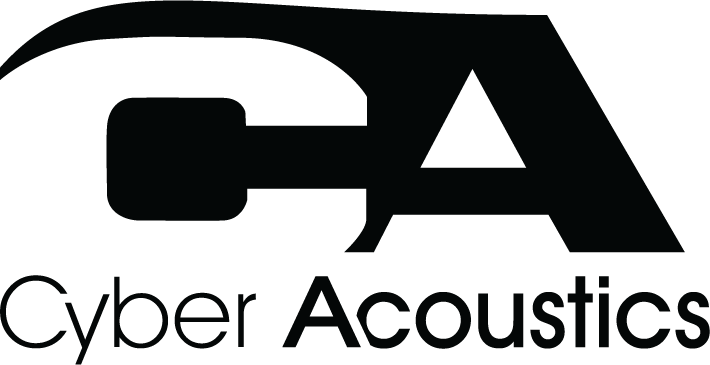Why Classroom Audio Technology is Important
Thursday, April 20, 2017 by Cyber Acoustics
Why Classroom Audio Technology is Important
Whether it’s leading an activity, teaching a subject, or playing a music recording, teachers often ask students to listen, and each situation requires students to pay attention and develop listening skills. The ability to hear an instructor is critical to students’ success. Studies have shown that students who sit in the back row of their classrooms miss 30% of what their teachers say because they cannot properly hear the lesson taught at the front of the room. When combined with the fact that hearing loss is on the rise in young people, it’s evident that students need assistance to hear clearly in their classrooms. After all, success starts with a great education, and a great education starts with great sound.
Noise is Harder on Kids than Adults
Students who struggle to hear due to classroom noise, hearing loss or other issues often suffer from delayed language skills, lower grades, social isolation, and poor self-esteem. These things all contribute to success, or lack of it, later in life. According to a recent children’s health article, noise is more distracting to a child's brain than an adult's, and new research from the American Association for the Advancement of Science shows it can hinder how students learn.
Consider how hard it is to carry on a conversation in a noisy restaurant. Researchers simulated that background by playing recordings of people reading and talking while testing how easily children detected words they knew, such as "playground," when a new voice broke through the noise. The youngest children could recognize one person's speech amid multiple talkers, but only at soft noise levels. Therefore, it's concluded that even light background noise during quiet story time can be enough for kids to miss what’s being read.
Louder is not better. Clarity is better.
According to a blog in the Future of Ed Tech Insiders, one of the most common reasons for a communication breakdown is poor speaking etiquette of the individuals involved in the communication process. Clear speech is a speaking style that focuses on clearer pronunciation of sounds, speaking at a normal pace, and using pauses to allow the listener time to process what’s being said. It’s common for people to speak too loudly when they think someone can’t hear them. However, louder is not better. Consonants convey most of the information in a word. Since consonants are spoken more softly than vowels, they tend to get drowned out in noisy environments.
Each time the physical distance is doubled from a teacher to a student, the audio level is cut in half. High levels of ambient noise significantly impair children’s comprehension when they are seated at modest distances from the teacher’s position in the room. Research also indicates that poor acoustics can lead teachers to raise their voices, which can strain vocal cords and create medical issues. Teachers must be heard to be effective, regardless of their classroom conditions. By having to constantly speak over classroom noise, vocal health is often compromised. Voice fatigue and throat infections account for up to 16% of teacher absenteeism.
Benefits of Classroom Audio Technology
Classroom audio is now recognized as one of the most powerful and cost-effective tools for student improvement. In fact, studies show that teachers who have used audio technologies overwhelmingly choose it over other classroom technologies. School districts that include audio-reinforcing systems in every classroom show gains in student achievement and teacher effectiveness. According to an article from School Planning & Management, use of audio enhancement consistently indicates significant benefits for education, particularly with academic achievement and test scores. Plus there are numerous other benefits aside from academic performance.
When teachers wear a microphone, they allow the audio technology to distribute their natural voice throughout the room, so that every student can hear them more easily and more clearly. Teachers using a microphone system can speak in nurturing tones, can be heard over classroom sounds and disturbances, and have less vocal strain and fatigue. They report being less tired at the end of the day and more efficient by not having to continuously repeat their statements.
The following list outlines key benefits and data points for investing in classroom audio technologies:
Reduction in Ambient Noise Levels
The various noises that make up the ambient noise in a classroom are composed of external sounds like street traffic, facility noises like air conditioning, and classroom noises like printers, students talking, etc. Classroom audio systems overcome ambient noise and distribute the teacher’s voice throughout the room. Every child hears the teacher at the same amplified level no matter where they’re seated.Improved Academic Performance
Sound-field studies, such as the 2005 MARRS Project, show that amplifying a teacher’s voice results in exceptional improvement in reading and language test scores for students at all levels, and reduces special education referral rates by up to 40%. Some studies have shown up to a 10% improvement in academic test scores with statistical gains achieved when employing classroom audio for less than one school year.Increased Class Interaction & Student Participation
Teachers using classroom audio note an improvement in student motivation and participation due to more consistent understanding of what is expected. They also report improvements in responses to questions and requests. In classrooms where students use microphones to amplify their voices, teachers report increased enthusiasm and desire to read and present oral reports.Reduced Classroom Stress & Behavior Problems
Audio solutions assist with classroom management, helping to reduce discipline issues and stress for teachers and students overall.Reduced Voice Fatigue & Throat Illness in Teachers
With the use of audio technology, teachers can speak in a conversational voice so that all students can hear them more easily. Vocal strain is greatly diminished. Schools using classroom audio systems report significantly lower teacher absenteeism due to voice and throat problems.
Hearing is Essential to Student Achievement
Students spend 75% of their school day involved in listening activities. Their primary channel for learning is hearing. The better children can hear, the more they can learn. The goal of classroom audio technology is to enable every child in a classroom to clearly hear all the speech components of the teacher’s voice no matter where a child is seated relative to the teacher’s position in the room.
At Cyber Acoustics, we are dedicated to improving the listening and learning environment for every child. We offer affordable, industry-tested audio solutions with children’s hearing, comprehension and education in mind. To learn more, take a look at our product catalog for the best selection of tested headsets, headphones, speakers and microphones designed specifically for students in K-12.


